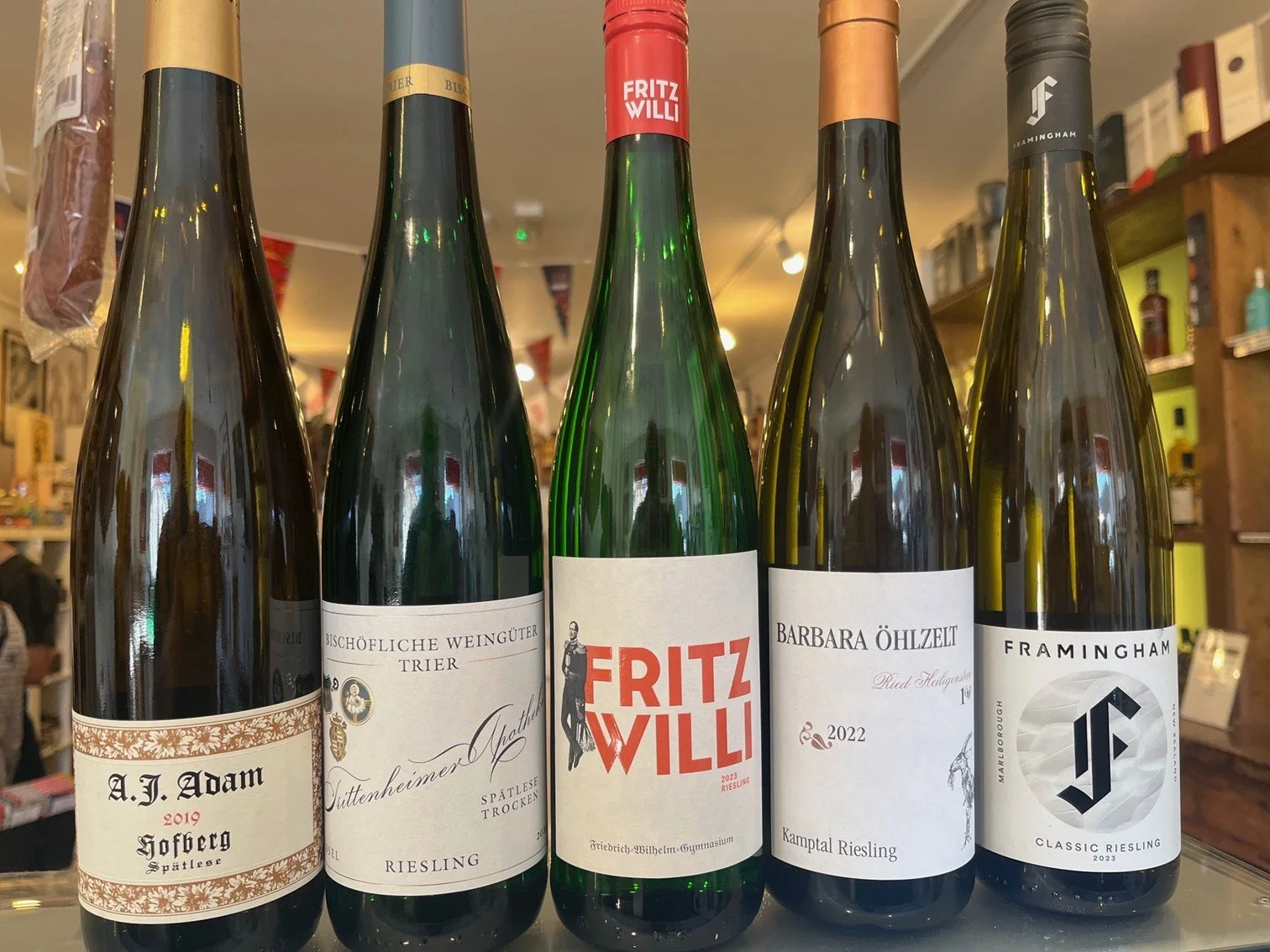Diary of a Shopkeeper, 6th July
I’ve just returned from a wine-buying trip to Italy in the company of a group of other Scottish wine merchants. (More about that in a future column.) The last wine we shared on the trip confirmed a long-held suspicion.
Our flight from Abruzzo to London was delayed – two hours sitting in a baking hot, jam-packed Boeing on the apron of Ancona airport, lovely. That meant we missed our connection to Edinburgh and points north, and had to stay in a budget hotel near Stanstead airport. We checked in after 9pm, and just made it to the hotel bar before last orders for food were called. The menu of fish and chips, pork chops and chips, or curry and chips was a comedown after what we’d been enjoying in Abruzzo: lamb arrosticini – skewers of tiny cubes of tender meat, marinated and grilled over charcoal – and fusilli con calamari all'aglio – pasta with slivers of squid and a blizzard of garlic.
But we were hungry, and home (nearly) so spirits were high. What to drink? One last glass of wine to mark the final meal of the trip! But the wine list was far from exciting, especially after several days of sampling great Italian bottles. Was it all to end with a jug of tap water? No! For the hiding at the bottom of the wine list was a Riesling from Trimbach, a respected producer from Alsace on the French/German border.
Riesling! We all agreed immediately that was the bottle to go for. It was delicious and refreshing and our enjoyment of it confirmed something I’ve suspected for years: if you put a wine list in front of a group of wine merchants, sommeliers, or wine writers, nine times out of ten they’ll choose a Riesling. The interesting thing is that this confidence in the grape is not shared by most diners or shop customers. We sell a hundred times as much Sauvignon Blanc as Riesling in the shop. There’s nothing wrong with Sauv Blanc, I’m a fan, but it’s a shame that so many folk won’t give another of the world’s great white wines a chance.
Riesling’s reputation problems go back to the 1970s and ‘80s, when cheap German wine dominated supermarket and corner-shop shelves. With the rise in wine consumption across the UK, a style of wine that combined freshness with sweetness was attractive to millions of drinkers trying wine for the first time. As so often with fashions in wine, a boom in popularity soon led to a decline in quality. Unscrupulous producers scrambled to bottle more and more vaguely fruity wine, often artificially sweetened because the grapes were now being harvested barely ripe, from low-quality vineyards.
We’ve seen this pattern over and over, from Australian Chardonnay to Italian Prosecco. A wine rises in popularity till its traditional sources can’t meet the demand. Industrial production steps in: volume climbs, quality drops, till after a few years everyone thinks, ‘Why did we ever like this? It tastes of nothing. It’s sugar water masquerading as wine!’ Such was the fate of German wine by the end of the last century. By association, Riesling wines from around the world were tainted with the same brush, even though most of the poor-quality German wines were not made of it, but of less distinguished grapes like Silvaner and Müller-Thurgau.
Meanwhile, people who had always made good Riesling were still making good Riesling. In fact, more good stuff was being made than ever before, as new world regions like Eden Valley in South Australia and Marlborough in New Zealand perfected their versions. Great Riesling was still being made but it was out of fashion, and just wasn’t selling. That promoted committed producers to push their quality even higher, and it kept prices low. Which is why Riesling is loved by wine merchants everywhere. They don’t care if it’s unfashionable: they focus on the quality and the value for money.
I’ve been a fan of Riesling for years, and have been gently steering Orcadian wine buyers into giving it a go. It’s a particularly good match for seafood, especially crab in any form, so really is a perfect fit for us. Personal favourites include affordable Heaphy and Framingham from New Zealand, and – at the premium end – Barbara Öhlzelt from Austria.
Above all, I love German Riesling. The generally cool climates there ensure grapes don’t get over-ripe and flabby, ensuring refreshing acidity. Fermentation stops early, meaning that natural fruit sugars remain at relatively high levels. But the wines don’t taste sweet: in good German Riesling, the acidity balances the sweetness, delivering an exhilarating, electrifying wine-drinking experience.
Throughout July we’ll be exploring the wonderful world of Riesling, and other German wines. And our explorations will be conducted from the safety of the shop, with no risk of broiling in a Boeing on a sun-blasted runway.
We are featuring German wine extensively all July, including Riesling , of course, dry and sweet, but also Weissburgnder, Grauburgunder, Spatburgunder and even a lovely zingy, sparkling Sekt.
This diary appeared in The Orcadian on 10th July 2025. A new diary appears weekly. I post them in this blog a few days after each newspaper appearance, with added illustrations, and occasional small corrections or additions.

